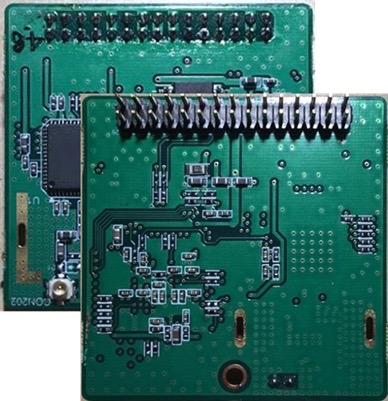(Source: Radio World via Marty)
[…]For years, NASB members have wanted to replace (or at least augment) the poor audio quality of analog SW with the crystal-clear sound of digital SW radio, specifically the Digital Radio Mondiale standard developed in Europe that is now being used in China and India.
[…]There are some DRM radios in use now, which is why some NASB members are offering limited DRM broadcasts alongside their regular analog SW transmissions.
“But the current generation of DRM SW receivers cost about $100 each, whereas you can buy a cheap analog SW radio for as little as $10,” said Dr. Jerry Plummer, a professor at Austin Peay State University in Clarksville, Tenn., and frequency coordinator for U.S. SW station WWCR. “Given that the audiences being targeted by NASB members are largely in the third world, the lack of inexpensive DRM receivers keeps them listening tDRMo analog shortwave.”
[…]Given the NASB’s interest in low-cost DRM receivers, it was no coincidence that Johannes Von Weyssenhoff was invited to speak at the annual meeting. Von Weyssenhoff said his StarWaves manufacturing firm (www.starwaves.de) has the technology, capability and existing prototypes to build DRM radios for $29 each, but only if the sale order is large enough to deliver economies of scale. (He also estimated $18 DRM modules could be built for installation in other radio models.)
“Twenty-nine dollars is doable at volumes staring at 30,000 receivers,” Von Weyssenhoff told Radio World. “Even smaller quantities would be possible at this price for very simple radios — for example, without graphics displays — but these would be special projects that had to be discussed individually. But even more advanced radios with Bluetooth or premium designs will be possible to offer at a reasonable price,” he said — as long as the sales orders was in the tens of thousands or more.[…]


Useless toys. As soon as the DRM is faced with short-wave fading, the audience becomes sad and they remember with good warmth the good old AM.
With the transition to DRM, the real distance of reliable reception will decrease sharply. How inclined are people to trust advertising!
What happened to the famous PantronX Titus II DRM receiver? 2 years ago it was supposed to be ready to go.
Don’t worry, PantronX’s annual “we are very hopeful that the first production run is ready by last quarter of this year” statement is just running a little late this year 😉
Interesting tale a friend in India told me a few months ago: After Avion’s January announcement about slashing the price of the AV-DR-1401 to Rs 6599 (~US$100) + tax & delivery, he contacted them to buy one. They quoted him ~ Rs 15000 (~US$210) incl. tax & delivery – about the same price they were selling for before the announcement…
Starwars.de still advertising the long defunct car shortwave radio? It was at least 8 years ago when they stopped making it. Strange to provide a link to a product no longer in production. Unless this is an attempt to get funding to put it back into production. I had one and it was full of birds and interfering signals. The engineers didn’t know you had to keep the digital circuits out of the RF, or so it seems.
The 3 classic blunders:
* Getting involved in a land war in Asia;
* Going in against a Sicilian when death is on the line; and
* Betting that DRM will take off if radios only cost 3x as much instead of 10x.
Too much exaggeration!
21 years ago was 1998, the first broadcast was in 2003!
Why did you leave out the 1.5 million Hyundai cars in India, the currently selling http://www.goscas.com/china-gr_216_drm_radio_receiver_am_fm_stereo_reception_auto_scan_tuning_memory_scan-8536660.html or http://www.avionelectronics.in/digital-radio-2248524.html
I can field those ones. Twenty one years is how long the standard has existed, and how long we’ve had for people to get building. But even if it’s only sixteen years old, that’s a lot of years. We left out the standalone radios you mentioned because they’re the expensive models mentioned, which is why they don’t sell in the developing world, which is where the major broadcasters are aiming their signals, which is why not that many major broadcasters use DRM, which is why people haven’t been making cheap receivers, which is why I don’t bet on DRM even though I’d really like it. And we don’t count the cars at the moment because they only sell in India, include a radio only if you purchase a rather expensive for the developing world new car, and are using DRM differently to the way most receivers would. Specifically, they are using DRM in the MW bands, not the SW bands, and receiving stations at a shorter range. When they are receiving DRM from a longer distance and using the same bands other broadcasters would be, I’ll pay attention.
And how many years is it now? Oh wait! Just over 21 years. Video 2000, CED, Elcaset, and DCC even last shorter when Philips, SONY and RCA saw there was no market.